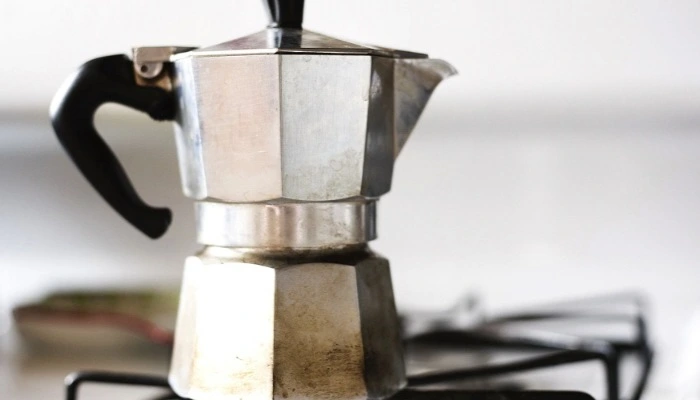The Moka pot is a classic stovetop coffee maker that brews strong, espresso-like coffee. Invented in Italy in the 1930s, it remains a favorite for its simplicity and rich flavor. While it doesn’t produce true espresso, it comes close, making it a great alternative for home use. This guide will walk you through everything you need to know about using a Moka pot, from choosing the right model to mastering the brewing process.
Understanding the Moka Pot
Before diving into brewing, it’s important to understand how a Moka pot works. The device consists of three main chambers:
- Bottom chamber – Holds water.
- Funnel filter – Holds ground coffee.
- Top chamber – Collects the brewed coffee.
When heated, steam pressure forces hot water through the coffee grounds, extracting flavors into the top chamber. The result is a concentrated, bold coffee similar to espresso.
Types of Moka Pots
Moka pots come in different materials and sizes:
- Aluminum – Traditional, lightweight, and affordable.
- Stainless steel – More durable and resistant to corrosion.
- Size variations – Typically range from 1 to 12 cups (note that “cups” refer to small espresso servings, not standard coffee cups).
Choose one that suits your needs—smaller pots are ideal for single servings, while larger ones work for multiple people.
Selecting the Right Coffee
The quality of your coffee greatly affects the final brew. Here’s what to consider:
Coffee Beans
Opt for freshly roasted beans labeled for espresso or Moka pot use. Medium to dark roasts work best, as they provide the rich, intense flavor the Moka pot is known for.
Grind Size
The grind should be slightly coarser than espresso but finer than drip coffee. Too fine, and the coffee may taste bitter; too coarse, and the brew will be weak.
Freshness
Always use freshly ground coffee. Pre-ground coffee loses flavor quickly, so grinding just before brewing ensures the best taste.
Preparing the Moka Pot
Proper preparation is key to a great brew. Follow these steps before turning on the heat.
Filling the Bottom Chamber
Use fresh, cold water and fill just below the safety valve. Overfilling can lead to excessive pressure and a weaker brew.
Adding Coffee to the Filter
Fill the funnel filter with ground coffee, leveling it without packing it down. Tamping can create too much resistance, leading to over-extraction.
Assembling the Pot
Screw the top chamber tightly onto the base to prevent steam leaks. Ensure the seal is secure but avoid over-tightening, which can damage the gasket.
Brewing the Coffee
Now comes the most crucial part—the brewing process.
Heat Source
Place the Moka pot on a stove over medium-low heat. High heat can scorch the coffee, while too low may stall the brewing.
Monitoring the Brew
As the water heats, steam pressure will push water through the coffee grounds. You’ll hear a gurgling sound when the process starts. Once the top chamber is nearly full, remove the pot from heat to avoid burning the coffee.
Stopping the Brew
To prevent over-extraction, run the bottom of the pot under cold water. This halts the brewing instantly, preserving flavor balance.
Troubleshooting Common Issues
Even experienced users encounter problems. Here’s how to fix them.
Weak or Watery Coffee
This usually means the grind is too coarse, the heat was too low, or the coffee was stale. Adjust these factors for a stronger brew.
Bitter or Burnt Taste
Over-extraction or excessive heat is the likely cause. Use a finer grind, lower heat, or fresher beans to correct this.
Coffee Not Flowing
If the coffee doesn’t rise to the top, check for clogs in the filter or ensure the pot is assembled correctly.
Cleaning and Maintenance
Proper care extends the life of your Moka pot.
Daily Cleaning
Rinse with warm water after each use. Avoid soap, as it can leave residues that alter flavor.
Deep Cleaning
Occasionally disassemble and scrub all parts with a soft brush. For stubborn stains, use a vinegar-water solution.
Replacing Parts
Over time, the gasket and filter may wear out. Replace them to maintain optimal performance.
Advanced Tips for Better Coffee
Once you’ve mastered the basics, try these techniques for an even better cup.
Pre-Heating the Water
Starting with hot water reduces brewing time and minimizes bitterness.
Experimenting with Ratios
Adjust the coffee-to-water ratio to suit your taste. A common starting point is 1:5 (coffee to water).
Using the Right Heat
Gas stoves provide more control than electric ones. If using induction, ensure your Moka pot is compatible.
Comparing Moka Pot to Espresso Machines
While a Moka pot doesn’t match the pressure of an espresso machine, it offers a similar intensity.
Pressure Differences
Espresso machines use 9 bars of pressure, while Moka pots reach about 1-2 bars. This results in a different texture but still a strong flavor.
Flavor Profile
Moka pot coffee is richer than drip but less creamy than true espresso. It’s a great middle ground for home brewing.
Conclusion
The Moka pot is a simple yet powerful tool for making espresso-like coffee at home. By choosing the right coffee, mastering the brewing process, and maintaining your pot properly, you can enjoy a rich, flavorful cup every time. Whether you’re a beginner or a seasoned coffee lover, the Moka pot offers a rewarding brewing experience.
Related topics:
What is the Difference between Espresso and Filter Coffee?
How to Make Strong Espresso with DeLonghi
Can You Make Iced Coffee with an Espresso Machine?


